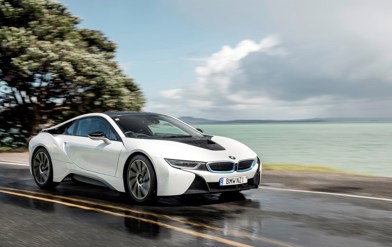I like to think of the Mercedes-Benz EQC as a humble celebrity. Despite winning the New Zealand Motor Writers’ Guild Car of the Year award last year, you’d hardly even notice it on the street, as it doesn’t feel the need to seek attention. This mantra is true for the EQC as a whole; while it might be one of the most “normal” looking electric cars on the market, it remains one of the best.
Following in the footsteps of Jaguar’s electric I-Pace to win this award, the EQC beat out the Toyota Yaris and Land Rover Defender. It received top marks from me throughout the judging period, so you can imagine my delight when it went on to claim overall victory. It will be interesting to see if the smaller EQA can do the same this year, but we’ll cover those other EQ-badged entries to NZ in a moment.
My relationship with DRIVEN’s long-term EQC has been bittersweet. I was lucky enough to get a decent weekend of driving in before NZ was plunged into level 4 lockdown, but since that fateful Tuesday afternoon, it has sat lifeless on the driveway.
The EQC was the first pure electric vehicle that Mercedes-Benz brought to the market and it’s an impressive machine. Featuring a dual-motor system that makes 300kW and 760Nm, this family-friendly, emissions-free SUV will rocket to 100km/h in a tested 4.8 seconds, putting it in the performance region of AMG’s twin-turbo V8-equipped monsters. But unlike some performance BEVs that are one-trick ponies, the EQC is the all-rounder you’d hope to see from a luxury brand like Mercedes-Benz.
I’d argue that the beauty of the EQC is its unassuming nature. On the inside, you won’t find a ginormous screen, but instead, the same subtle dual-monitor display that you can find in almost every single Mercedes car. The same goes for the rest of the interior, as well as the multi-function steering wheel that is now standard across the whole range. My point here is that Mercedes hasn’t gone out of its way to make the EQC any different from its petrol- and diesel-powered vehicles, which makes the transition to electric power significantly easier for buyers.
To read more about the Mercedes-Benz EQC, click here
Different drive modes allow you to customise the ride. In Comfort and Eco, acceleration is still rapid, but the acceleration has a linear feel, imitating that of an internal combustion engine (ICE). In Sport, linearity is thrown out the window and the EQC’s acceleration is sharp. From a standing start, the tyres struggle for traction at the mercy of 760Nm, and the 0-100km/h sprint is completed in silence — it’s exciting stuff!
This year, the EQC has benefited from an update that sees the AC maximum charge rate increased to 11kW. With an 11kW-capable unit at home, the EQC’s 80kWh battery can be charged to 80 per cent in just under six hours — or you can just plug it in overnight.
On a DC fast charging station, the time is cut down significantly to 40 minutes. At 80 per cent, the EQC is good for around 280km of range according to the WLTP cycle. We’ve regularly seen 350km from full charges.
On the topic of charging tech, it’s worth bringing up the EQA, which is the second battery electric vehicle that Mercedes-Benz has introduced to the NZ market. While it shares a lot of styling cues with the EQC, this small all-electric SUV is quite a different offering.
Price is the first significant difference, with the EQA coming in around $60,000 cheaper than the EQC. With just a single 140kW motor driving the front wheels, it gets a smaller 66.5kWh battery, but range sits around the 400km mark.
The EQ range is set to expand with the introduction of the EQS and EQB, with local pricing for both vehicles yet to be revealed. I’m most excited for the EQG: an all-electric G-Class off-roader. Put away that crypto wallet for the time being, though, as this battery-powered SUV won’t be available until at least 2024.


